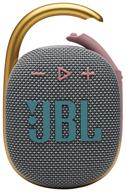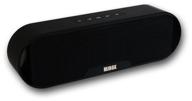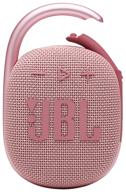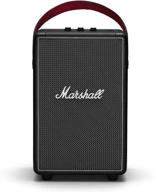
Review on IFi Headphone Amplifier Wireless Streamer by Raymundo Miller

The best dynamic DAC under $5,000.
(I have had several iFi products in the last 5 years and decided to write this review after buying this one and the last 10 years spent days with almost all the features. hope this helps some of you). Ifi has always been a company known for serving the audio world with great value. Their early products, like the Micro iDSD, were praised in the audio community for their superior sound, but were priced significantly lower than the competition. In recent years, iFi has started to push the market for high quality audio equipment. The Pro iCan is considered by many to be one of the best non-exotic amps out there. For $1,500, it can easily drive the demanding Abyss AB-1266 and Hifiman Susvara. You shouldn't be surprised, because high-end was in iFi's DNA. What many may not know is that iFi is actually a subsidiary of Abbingdon Music Research (AMR), which makes high-quality consumer audio products. The flagship AMR DP-777 DAC was priced at $5,000 at the time of publication. When the Pro iDSD was announced, there was much acclaim given its impressive specs and wealth of features, but many also wondered if the iFi could deliver sound and performance in a crowded $2,000-$3,000 market. Cons: The iDSD consists of an aluminum housing. There are holes on the top and sides of the device so you can look inside. There's also a small round viewing window on the top that lights up when using the horde-style tubes. Speaking of tubes: the iDSD can be operated in full-solid-state mode, in a Class A all-tube section based on two GE5670 tubes, or in Tube+ mode, which "reduces negative feedback to a minimum. Burr-Brown Bit-Perfect DSD and DXD four-channel DAC stack. There is speculation that the actual Burr-Brown chip used is a PCM1793. All signals to the DAC are re-clocked with a low-jitter Global Master Timing® oscillator sourced from the AMR DP-777 DAC. The Quad DAC chips together with the new XMOS XU216 X-Core 200 Series processor with 16 cores enable PCM decoding up to 768 kHz as well as DSD upsampling to DSD1024. The Pro iDSD also uses a dedicated FPGA and DSP chip to perform its digital filtering functions. On the front you'll see the power button, input selector (press to adjust OLED brightness and hold to adjust polarity), filter selector, and output mode. (Solid, Tube or Tube+), SE 3.5mm headphone jack, 6.3mm headphone jack and TRRS balanced 2.5mm headphone jack, selectable headphone gain (0dB/9dB/18dB) and volume control . You can control the device with the supplied remote control. The remote controls volume only, but can control both the Pro iCan and Pro iDSD. If you weren't impressed with the internals, the Pro iDSD also offers plenty of inputs and outputs. On the back you have, from left to right: 1. XLR2 balanced output. RCA SE Out3 output. Output selector switch (Hifi Fixed, HiFi Variable, Pro Fixed and Pro Variable): It is recommended to set Hifi Fixed as DAC only or HiFi Variable if you want to use the iDSD as a DAC/Preamp. HiFi fixed mode delivers 4.6V versus 11.2V in Pro.4 fixed mode. Ethernet to use the iDSD as a network streamer.5. USB Type A Host: You can play USB sticks and external hard drives directly from it. Make sure to format the media as FAT32. You can only access the USB storage via the MUZO app (see Network Streamer section for more details).6. USB 3.0 type B for connection to the USB port of a PC or laptop. It is important to know that the Pro iDSD is galvanically isolated but uses Micro iUSB3.0 technology. In theory, you should get a very clean USB signal.7. Digital coaxial SPDIF8. Slot for memory card MicroSD9. AES/EBU10 digital input. WiFi antenna. The easiest way to connect the Pro iDSD to a network is via an Ethernet cable. You can then find the IP address in the Muzo app. You enter the IP address in the browser in the browser to set up WiFi. Otherwise, you can press and hold the WPS button (Filter button) to connect to your Wi-Fi router.11. BNC digital input acting as SPDIF and AES3id for use with high-end CD transport.12. Clock sync mode: I haven't played with an external clock to make a meaningful comment on it.13. BNC14 sync output. DC Loop-out: Allows iDSD to be used with Pro iCan amp.15. DC 15V/4A Power Please note that all inputs except USB are currently limited to maximum sample rates of 192kHz PCM and DSD (64) over DoP. Cable -> Pro iDSD -> McIntosh MHA100 -> Hifiman Susvara I deliberately mentioned a dedicated PCIe USB card because it took me a long time to figure out how PC and USB noise can affect audio quality. A few things I did to clean up the USB signal greatly improved the SQ on all my devices. Now back to Pro iDSD. The Pro iDSD sounds so good that I don't think it's possible to simply split its SQ into highs, lows and vocals. Music is emotional and the way the Pro iDSD evokes your emotions is hard to put into words. Right off the bat, with no burn-in, the Pro iDSD sounds very dynamic while retaining excellent detail. Each track sounds punchier with great layering. There is something special about the most popular DACs and if you have to name a feature of the iDSD it is that it is one of the most dynamic sounding DACs on the market. In addition, Pro iDSD is still able to support natural and analog music playback. This really pushes Susvara to its full potential in terms of speed and detail. Each of your tracks will sound better, but you'll quickly find that poorly recorded tracks compare favorably to well-recorded tracks. The sound signature of the Pro iDSD is neutral, it does not color the recording. The soundstage in terms of width and depth is one of the best I've heard. In well-recorded jazz tracks, the Pro iDSD really brings out the instruments. It feels like the sound comes from Susvara and fills the whole space around my head. One disappointment in writing this review is the lack of iFi's promised MQA feature for Tidal streaming. The current assumption is that the MQA update will ship with the September firmware update. Solid State Mode: This is my favorite mode for pairing with the MHA100 and Susvara. This is the best sound and most refined mode. My sonic impressions are mainly based on the solid-state mode. Tube Mode: This is my least favorite mode. I feel like I lost the details and everything sounded too warm. There is also a significant loss of transparency in the high frequency range. Lamp+ mode: probably a balance between solid state and lamp modes. I keep switching back and forth between Tube+ mode and Solid State mode. There is something very analogue and casual about Tube+ mode. You don't lose too many high frequencies. I think most owners will find themselves switching between Solid State and Tube+ modes. Again, the SQ of the different modes can vary depending on the amp and headphones/speakers, according to YMMV. Compared to other DACs: Chord Qutest: I really like my Qutest. Qutest has a very detailed and natural rendering. The soundstage is great. When it comes to surreal dynamics, however, Qutest cannot match iDSD. The iDSD hits the face so hard and direct that you get a more visceral feel to the music, especially when recording live performances. Schiit Gungnir Multibit with Gen 5 USB: Gumby sounds very natural and analogue with very holographic music reproduction. Such a sound signature can be very exciting. If you upgrade to Qutest or iDSD, you don't lose the analog qualities of the Gumby, but clearly gain in detail and dynamics. Based on my research, The Yggy Analogue 2 could be a good competitor for iDSD, but I've never heard of it. One thing that really bothered me about the Schiit Multibit DACs was the constant clicking when changing the bitrate. This is the main reason why I sold my Gumby.McIntosh MHA100: For a long time I only used the MHA100 as a stand-alone solution. There's a lot to be said for having a device that can act as both a DAC and an amplifier. You don't have to mess with connections etc. Usually, combo blocks are optimized by the manufacturer. Many consider the MHA100's DAC section to be its weakest link. I really like it for a very long time. I noticed an improvement on both the Gumby and Qutest, but I never felt the upgrade was significant enough to have a different emotional experience while listening to music. This is where the iDSD really stands out from the crowd. Because iDSD offers layering and dynamics like no other. iFi Micro iDSD Black Label: The Black Label is a great DAC/amplifier for its size. However, it's really an unfair comparison to the Pro. Pro is a whole different beast. Pro wins in every imaginable category. Especially when used as an external DAC powering the MHA100, the Black Label has the smallest soundstage of any DAC I've had recently. It sounded digital and clipped compared to all the DACs above. In fact, I prefer the built-in MHA100 microiDSD DAC. I mainly mention the Micro iDSD because it is the previous flagship iFi DAC. Filter: Pressing the Filter knob toggles from non-DSD remastering to DSD512 remastering and DSD1024 remastering. When you play a non-DSD file in non-DSD remaster mode, the following applies: 1. Bitperfect: This is the same mode without resampling.2. Bitperfect+: Applies an analog filter and corrects for SINC or very high frequency roll off that occurs in Bitperfect.3 mode. Gibbs Transient Optimized: This is a digital filter with pre-ringing, minimal post-ringing, and 32 equalization taps. This minimizes the Gibbs effect that causes distortion in the time domain.4. Apodisation: no pre-call, modest post-call, 128 correction clicks.5. Transient Aligned: He has the most touches with 16,384 touches. None of the filters mentioned above are applied in these two modes. You can turn the knob and it looks like you're switching digital filters, but they don't do anything. When you play a native DSD file, iDSD only plays it in bit mode. When upsampling the original DSD file to DSD512/1024, there is no bit perfect mode as a digital filter must be applied. To be honest I had to do a lot of research to find out. I assure you that the difference between different filters is small. If I tell you I hear a significant difference, I'm going to lie to you. The most notable difference from the filters I hear is that when upsampling to DSD512/DSD1024 you lose some dynamics but add some soundstage and clarity. None of the filters will make or break the iDSD as a DAC. Maybe more sensitive ears can pick up big differences. All digital processing options above apply to all sources including network audio bridge, AES/EBU and S/PDIF inputs. Pro iDSD as a DAC/Amplifier Combo: The Pro iDSD features an unbalanced 3.5mm output, as well as balanced 6.3mm and 2.5mm TRRS outputs. The power output is significantly weaker compared to the Pro iCan. I have to crank the gain to maximum and turn the volume up to 12 o'clock to get the same listening level with a 1/4" Susvara. The vocals sounded good, but everything else sounded muted. The sound stage has been significantly reduced compared to the MHA100. Most people who buy a Pro iDSD will probably only use it as a DAC, but I see it as a good option for those with more efficient headphones like the HD800/HD800 or Utopia. I also tested the 2.5mm output with the Westone ES60 at a lower gain level. Now with IEM Pro iDSD sounds better than AK380. I was amazed that a desktop DAC/amp has a cleaner background compared to a dedicated portable endgame DAP. The soundstage is excellent too, but not as big as the AK380. Network Streamer: I tested the iDSD's network capabilities via the Muzo Android app. It uses Linkplay and has Spotify and Tidal integrated. On Tidal, it only plays in 16/44 format. I was able to stream Hi-Res files from my phone to the iDSD and reproduce the original resolution up to 32bit/192kHz. Sounds good, but not as good as Tidal USB playback. I then set up a DNLA server in the Jriver Media Center 23. The DNLA Jriver server can be found as a source in the Muzo app. This allows you to play up to 32/192. When I tried to play DSD files, the application just crashed. This may be due to the large file size. The sound quality was very good, but slightly worse than via USB. One factor to consider is that I was streaming over an Ethernet cable. Ethernet was carried over an end-to-end power line. Probably a lot of noise. I do nothing to remove noise from the network signal. So the sound quality could be even better. In the future, I would like to see iFi either develop their own streaming app or support more third-party apps. Conclusion: The Pro iDSD is certainly an impressive DAC. Even at the current price, the iDSD fully justifies itself as a no-frills DAC. It's much more than just a DAC and could be much more if iFi develops a better iDSD network streamer control app. Then iDSD positions itself on a different level. However, the main trump card of the Pro iDSD, in my opinion, is its dynamism. Haven't heard of Pro iDSD competitors yet. However, the main trump card of the Pro iDSD, in my opinion, is its dynamism. Haven't heard of Pro iDSD competitors yet. However, the main trump card of the Pro iDSD, in my opinion, is its dynamism. Haven't heard of Pro iDSD competitors yet.
- HIGH DEFINITION AUDIO. Play any high-resolution file with Burr-Brown's quad-core dual-core DAC. This means media file formats and information remain the same for the purest sound, from MP3 to Studio. Class Bitperfect DSD 512, DXD, PCM 768 as well as MQA (decoder)
- I will be silent
New products
Comments (0)
Top products in 🎧 Wireless & Streaming Audio
Another interesting products

Stream Your Favorite Tunes With AUNA KR-200 SI Internet Kitchen Radio - Spotify Support, Remote Control, And More!

15 Review
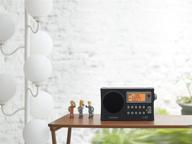
Sangean PR-D4W Portable Weather Alert Radio with AM/FM Bandwidth Narrowing and Auto Tracking for Improved Searchability

12 Review
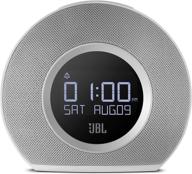
JBL Horizon Bluetooth Alarm Clock Radio with Multiple Alarms, Soothing Ambient LED Light, Automatic LCD Display, and Dual USB Charging (White, AM/FM Radio)

41 Review

Experience Dynamic Audio with Panasonic SC-UX100 CD & USB Wireless Bluetooth 300W Mini Hi-Fi System Shelf Stereo

19 Review


